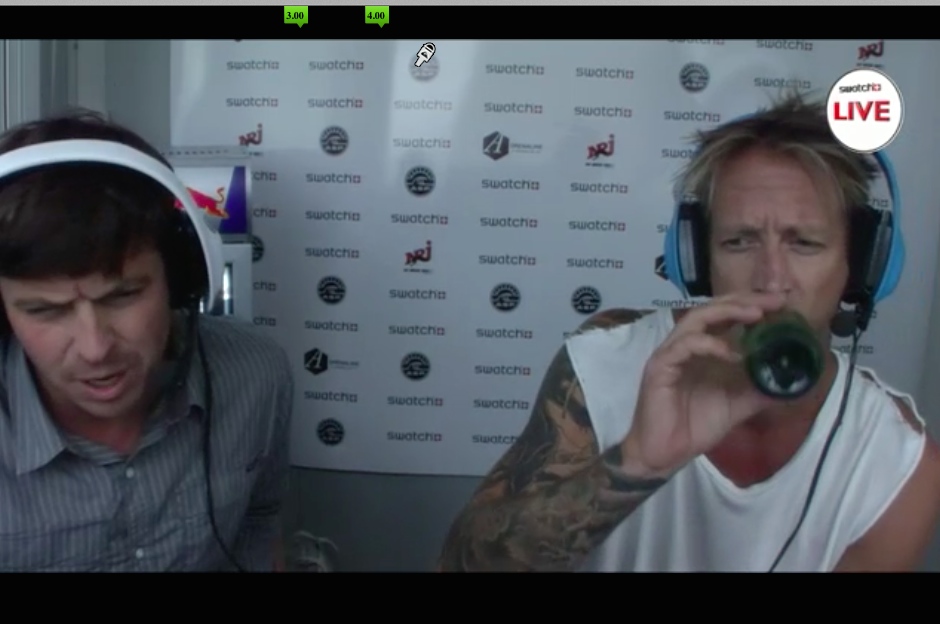A dozen attacks in a little over two years; six fatals…
Can you believe the chutzpah of all these sharks? Hoo! It used to be that unless you lived in the heartland of the great whites, South Australia or Cape Town or Northern California, shark attacks were only an abstract concept and to to be unduly concerned about ’em was the act of a paranoid mind.
Now I’m getting repetitive strain injury typing, “Shark Attack Reunion Island” or “Man killed by shark in Byron Bay” or “Is Western Australia the shark attack capital of the world?” every few months.
Last week, Byron Bay had it’s second fatal attack by a great white in less than a year. By all accounts, and for whatever reason, maybe unseasonably warm water, the joint is crawling with sharks. Surfers bumped; divers hit.
Six hours drive south in the city of Newcastle, beaches were closed when a 15-foot white was patrolling just offshore. Even as I write, dozens of beaches on Australia’s east coast remain closed because of shark sightings.
And if you were thinking about escaping to the Indian Ocean, Reunion has just crawled back into the headlines with a fatal attack on a swimmer. The sixth fatal in a little over two years. The 20-year-old was bitten on her leg five metres from shore in southwestern l`Etang-Sale, just south of St Leu’s dreamy lefts. She died of cardiac arrest at the local hospital, as tends to happen in such catastrophic events.
(Click here for an eerily similar event at the same joint two years earlier)
In the last two-and-half years, Reunion Island has hosted 14 attacks, six fatals. It ain’t pretty.
But what’s interesting, and it’s interesting after the fatal attack on a surfer near Byron Bay last week, is the differing circumstances of all these attacks.
The facts are clear enough. More surfers are being attacked by sharks. But, then, never has there been such numbers of people surfing. Look around. All those weird little coves, points, reefs, beaches that no one touched ten years ago are filled with surfers.
In Reunion, it’s bull sharks, mostly. Tough bastards who don’t care how hard you jam ’em in the eyes or gills. In August 2012, Fabien Bujon was surfing St Leu, when a bouldogue went for him. He kicked it. Off came his foot. He went for its eyes and gills. The shark took his hand off to the wrist. With his remaining hand Fabian kept ahold of the beast’s vulnerable gills. He survived. With a limp and an empty handshake.
A year later a 15-year-old girl was ripped apart while snorkelling five metres from shore. Only two months before that a honeymooning surfer was attacked by bull sharks in front his new wife.
In mainland France, popular television shows make jokes that the country’s Paralympic team is comprised mostly of athletes from Reunion.
Yeah, Reunion has always had a rep for sharks. It’s the Indian Ocean. It’s tropical. Like Madagascar. Like Mauritius. Attacks happened but they were predictable. Surfers were smart enough to avoid the east coast, to avoid surfing after rains that muddied the water and by staying out of the drink at dawn and dusk. An attack here and there, but years apart, and only occasionally fatal.
But in 2007, a 19km stretch of marine reserve was created on the west coast. Nothing could be touched, shark, coral, whatever. Shark attacks spiked. And all either in or close by the new marine reserve.
“The reserve became a refrigerator, a pantry, for bull sharks,” says Laurence Joanblanq, a former pro surfer, whose family keeps a restaurant at St Leu, but who now travels abroad every school holidays to avoid letting her kids spending time in the water there. After every surf, she texts her husband to let him know they’ve survived.
One local surfer says he sometimes weeps, literally cries, whenever he drives past these perfect empty waves.
On Wednesdays and Saturdays, days when the kids aren’t at school, vigie requin (government employed freedivers with spears) patrol popular surf spots. If a shark is spotted whistles are blown and the water cleared. The vigie requin are trained to deal with trauma. ie. sudden amputations.
In Byron, they’ve got whites; same as in WA and South Africa.
Northern California has plenty of whites, but according to San Francisco surfer Lewis Samuels, they have a different hunting pattern to those in Australia and South Africa. They might bite but they’ll let go after the initial bleed and wait for you to bleed out instead of taking you down straight away, therefore giving you a chance to get to shore before you expire.
“That gives you time to get medical help,” says Lew.
So what do you do? Do you kill ’em? Or you live (and die) with ’em?







